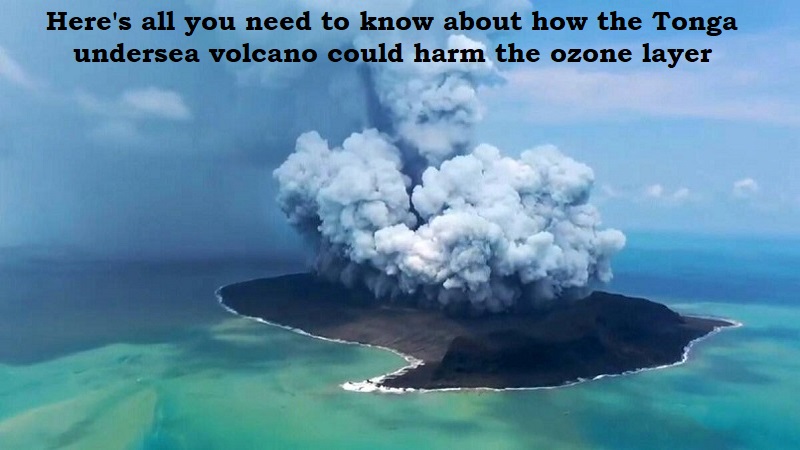
On January 15, 2022, the powerful Hunga Tonga-Hunga Ha’apai eruption shattered all previous records for the direct injection of water vapour by a volcano or other natural phenomenon in the ‘satellite era.’ Additionally, it released huge amounts of ash into the air. A research that appeared in Geophysical Letters claims that the strong explosion spewed water vapour 53 kilometres into the air. According to the study, ‘Tonga eruption may be the first volcanic eruption observed to effect climate through surface warming produced by surplus water vapour, rather than by surface cooling generated by volcanic sulphate aerosols.’
How big was the explosion?
As per Live Science, the Hunga Tonga-Hunga Ha’apai volcano erupted with the equivalent force of 100 Hiroshima bombs, making it the most powerful explosion to have occurred on Earth in more than 30 years.
The explosion caused the entire planet to tremble, making the air ‘rang like a bell’ and sending tsunamis crashing on nearby beaches. The eruption caused more than 590,000 lightning strikes over the span of three days. More than any other eruption in recorded history, it sent an ash and dust cloud higher into the atmosphere.
The massive explosion discharged a number of toxic substances as well as a significant amount of water into the atmosphere, both of which are currently harming our planet’s stratosphere.
How much water did the volcano spew?
The eruption injected an unprecedented volume of water—enough to fill 58,000 Olympic-size swimming pools—according to experts from the National Aeronautics and Space Administration (NASA), the University of Edinburgh, and NorthWest Research Associates.
The standard Olympic swimming pool is 50 metres long, 25 metres wide, and 3 metres deep.
What damage might water in the atmosphere cause?
During volcanic eruptions, significant amounts of SO2 are often emitted into the atmosphere, which cools the planet. Tonga surprisingly did not produce much HCl or SO2.
The study concluded that the eruption ‘may effect climate through surface warming due to the radiative forcing from the excess stratospheric H2O, rather than surface cooling due to sulphate aerosols.’
The researchers expressed concern that the additional water would radiate heat, warming the atmosphere in a manner akin to that of greenhouse gases. The warming effect of the water will likely outlast any cooling effects the gases produce since it is anticipated to persist longer than other volcanic gases like sulphur dioxide, which typically fall out of the atmosphere within two to three years.
According to geologists, this indicates that the Tonga explosion will probably be the first known eruption to have a warming influence on the world rather than a cooling effect.

Post Your Comments